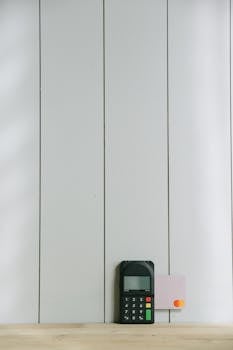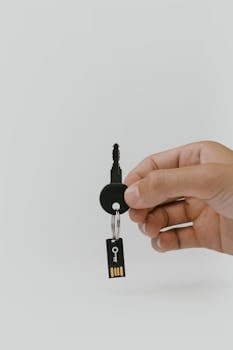Personal Finance
Retirement for the self-employed: SEP IRA and Solo 401(k) in practice
Learn how self-employed retirement USA options like SEP IRA and Solo 401(k) work in real life. Practical steps, tax tips, deadlines, and expert advice simplify your entrepreneur retirement journey.
Advertisement
Saving for retirement as your own boss can feel like a maze, but it’s possible to make it work for you. Plenty of self-employed retirement USA options exist — yes, even more than you think.
Entrepreneurs juggle every financial ball, so building a solid nest egg requires strategy. With the right plan and a bit of consistency, self-employed retirement USA doesn’t have to be confusing.
This article walks you through SEP IRA and Solo 401(k) choices. If you’ve ever fretted about saving enough, you’ll find answers, steps, and hands-on tips tailored to the self-employed.
Comparing SEP IRA and Solo 401(k): Real Numbers and Scenarios
When you set up your retirement, aiming for clarity and control saves hours of stress. This section breaks down the core details of both the SEP IRA and the Solo 401(k).
Understanding key differences unlocks smarter decisions for anyone weighing self-employed retirement USA choices. You’ll be able to match each plan to your actual business flow.
Eligibility steps for SEP IRA: What to verify first
Check if you have any employees. Solo operators or those with only spousal employees qualify. If your business employs others, offering a SEP IRA becomes a requirement, not an option.
Ensure your business income qualifies as earned income, not only passive. Consulting, freelancing, and LLC/sole-proprietor profits count. Rental income without active involvement usually doesn’t apply.
If you meet these criteria, you’re ready to contribute. Many use a line in their bookkeeping spreadsheet: “Any 1099? SEP IRA possible this year.” That’s a practical self-employed retirement USA practice.
Eligibility checks for Solo 401(k): Your practical checklist
Operate with no full-time employees other than a spouse. If an annual busy season means hiring temps, check IRS definitions for part-time versus eligible employees.
Be sure your earned income is substantial enough. Solo 401(k) plans shine when your profits allow for large contributions — which means maximized self-employed retirement USA savings for high-earning years.
Choosing this option often starts with a spreadsheet: “Solo 401(k) eligibility: spouse only, no staff this year? Yes — max out savings.” Simple rule, big impact on your future.
| Feature | SEP IRA | Solo 401(k) | Takeaway Action |
|---|---|---|---|
| Contribution Limit | Up to 25% of comp. (max $66,000, 2023) | Up to $66,000 (salary deferral + profit-sharing) | Calculate max by using profit and cash flow |
| Employee Option | Allows employees (must include them) | No non-spouse full-timers | Decide based on your staff profile |
| Catch-Up Contributions | Not available | $7,500 for age 50+ | If 50+, Solo 401(k) may let you save more |
| Roth Option | No Roth feature | Roth Solo 401(k) possible | Consider if you prefer post-tax saving |
| Loans | No participant loans | Participant loan option | Solo 401(k) fits if loan access matters |
Focusing on Contributions: Funding your SEP IRA and Solo 401(k)
Deciding how much to contribute impacts your future and current budget. This section shows how to set contribution targets that suit your income cycles.
Many business owners anchor their self-employed retirement USA contributions to quarterly income spikes for steadier habits. Let’s break down options and scripts you can put to use today.
Tying contributions to your business rhythm
Allocate 25 percent of net self-employment income to SEP IRA, up to the annual maximum. Most schedule these deposits after filing estimated taxes for clarity.
Solo 401(k) users split their contributions: employee deferrals of up to $22,500 for 2023, plus employer profit-sharing. Running two deposits right after invoicing helps keep funds accessible yet allocated.
- Set automatic retirement transfers monthly, using bank apps. Regular automation builds discipline in your self-employed retirement USA routine and prevents accidental overspending.
- Plan for bigger contributions after high-income months. For example, after tax season or large client projects, move leftover profit directly to your plan, not your personal account.
- Track contributions separately in your accounting to simplify tax prep. Mark them as “retirement” in QuickBooks or Excel for clarity and peace of mind.
- Adjust contributions during slow periods but don’t stop completely. Even $50 a month keeps the self-employed retirement USA habit active, supporting long-term goals.
- Review your totals quarterly to identify room for an extra deposit at year-end. Last-minute contributions can boost your tax deduction and retirement balance.
By being deliberate about your contribution pattern, you hold yourself accountable and ensure self-employed retirement USA is part of your regular financial review.
Simplifying withdrawals and rollovers
Withdrawals before age 59 1/2 incur taxes and penalties. Check your plan documents for early withdrawal exceptions specific to your chosen account.
For rollovers, both SEP IRA and Solo 401(k) allow transfers to traditional IRAs later. Log your old plan’s custodian details for a seamless, tax-advantaged move when needed.
- Don’t take early withdrawals unless absolutely necessary. You’ll avoid unnecessary penalties and keep your self-employed retirement USA assets growing undisturbed.
- Document rollovers with both the old and new provider to prevent IRS mix-ups. Schedule calls, confirm with email receipts, and save PDFs in a retirement folder.
- Ask about one-participant loan rules if considering a Solo 401(k) loan. This option lets you borrow up to $50,000 or 50% of the account, whichever is less.
- Time rollovers for the off-season in your business for an easier tracking process. Less day-to-day chaos means fewer errors and a cleaner transfer record.
- Double-check that your annual IRS Form 5500 filing is complete if your Solo 401(k) exceeds $250,000. This prevents headaches and possible fines later.
Handling withdrawals and rollovers wisely makes your self-employed retirement USA dollars work harder — and lets you rest easy, knowing everything’s documented and tax-smart.
Keeping Track of Deadlines and IRS Rules Every Year
Self-employed retirement USA plans have specific timing rules. Meeting key contribution deadlines and staying IRS-compliant protects your tax benefits for every dollar you save.
Annual SEP IRA timelines for busy entrepreneurs
Set your SEP IRA contributions by your federal tax filing deadline, including extensions. Many use April 15 or October 15 as hard calendar reminders, minimizing the chance of missing out.
Your calendar should list “SEP IRA deadline: day taxes due.” A sticky-note on your monitor or recurring Google reminder makes this habit second nature for every self-employed retirement USA planner.
If cash flow is tight near tax time, use the extension window to deposit. That extra cushion ensures your savings stay on track without adding last-minute pressure.
Solo 401(k) cutoff dates for freelancers and consultants
Set up your Solo 401(k) by December 31 of the tax year you want to fund. Contributions align with your tax-filing deadline, including extensions for employer amounts.
Freelancers will benefit from flagging December 15 on their mobile calendar: “Solo 401(k): confirm setup + deposits before year end.” Each year, revisit and refresh it as the ultimate self-employed retirement USA hack.
Missing the deadline means no deduction or contribution for that year — so make these reminders part of your financial routine every fall.
Choosing the Right Provider: Simple Steps for Smooth Setup
The provider you select determines fees, flexibility, and daily ease. Vetting options protects your self-employed retirement USA from unnecessary cost and hassle.
Start with a checklist of features, including online account access, investment choices, and service quality. Many business owners opt for direct-to-consumer brokerages or community credit unions.
Comparing providers side by side
Make a chart of available SEP IRA and Solo 401(k) platforms. Check minimums, annual fees, and DIY investment tools. Online review videos often reveal the app workflow and customer service tone.
A quick ratings grid — “app ease: 5, phone support: 3, cost: 4” — gives you an apples-to-apples view. Share this table with a peer for a real-world recommendation.
If a provider offers free rollover support, put it at the top of your self-employed retirement USA list. The right fit saves time and money for years.
Self-sufficiency steps for account management
Choose online statements for monthly snapshots. This simplifies year-end reporting and file storage. Many use bank auto-syncs within their accounting platform for extra clarity.
Create a recurring appointment labeled “review retirement balances” every quarter. Quick check-ins keep the target visible and consistent.
Send yourself a calendar invite with a link or phone number for provider support. If you forget a password or need tax guidance, everything’s one click away.
Tapping Tax Benefits to Supercharge Your Savings
Tax deferral and deduction options amplify every dollar in your self-employed retirement USA account, letting your money snowball faster year after year.
Contributions lower taxable income, so you keep more for your future. Small businesses benefit from these incentives the most.
Deduction tactics for maximum benefit
File your SEP IRA or Solo 401(k) contributions as above-the-line deductions. This lowers your adjusted gross income and might push you into a lower tax bracket.
Keep receipts and plan statements in a digital folder labeled “self-employed retirement USA deductions.” Download them from your provider dashboard after making each deposit.
Providing your CPA or software with these forms streamlines year-end taxes and helps avoid missed opportunities for savings.
Calculating your potential tax reduction
Run a scenario: contributing $25,000 to a Solo 401(k) might save $5,500 in federal income tax if you’re in the 22 percent marginal bracket.
Use this calculation tool: deposit amount × marginal tax rate = federal tax saved. Add this number to your tax folder for accountability.
If you’re visual, a wall chart that tracks “retirement contributions vs. taxes saved” turns your self-employed retirement USA efforts into visible wins.
Avoiding Common Pitfalls and Streamlining Your Experience
Every plan has risks. Simple tools and routines prevent paperwork headaches or missed deadlines that jeopardize your self-employed retirement USA security.
Automate basics so you can focus on essential business work. The less mental overhead, the more space you have for creativity and smart decisions.
- Sync bank accounts to retirement providers for instant transfer capability. Use two-factor authentication to protect your funds, and review account activity monthly for peace of mind.
- Draft a deadline checklist for each year: account setup, contribution window, tax filing, rollover review. Pin it to your workspace or set device alerts to avoid surprises.
- Schedule one call with your provider’s specialist each spring. Ask about features, fees, and upgrades so your self-employed retirement USA plan stays current and competitive.
- Document every communication, especially regarding rollovers or tax forms. Saving screenshots and confirmation emails simplifies any future audit or troubleshooting process.
- Share your routine with a trusted peer or advisor. “Here’s my system for self-employed retirement USA planning — feedback?” Honest review prevents blind spots and inspires consistency.
Build systems that reduce manual effort and nervous energy. Treat retirement like other business processes: streamlined, repeatable, and constantly improving.
Conclusion: Making Your Self-Employed Retirement USA Blueprint Work
Pursuing self-employed retirement USA means crafting a plan with structure, routine, and flexibility. SEP IRA and Solo 401(k) options give entrepreneurs real tools for comfortable, tax-smart futures.
Every step, from automating deposits to tracking deadlines, increases your long-term security. Avoiding common pitfalls keeps your focus where it counts — building your life and business on your terms.
If you follow the habits above, self-employed retirement USA becomes an easy, integral part of your financial world. These action steps grow into real wealth and peace of mind.





